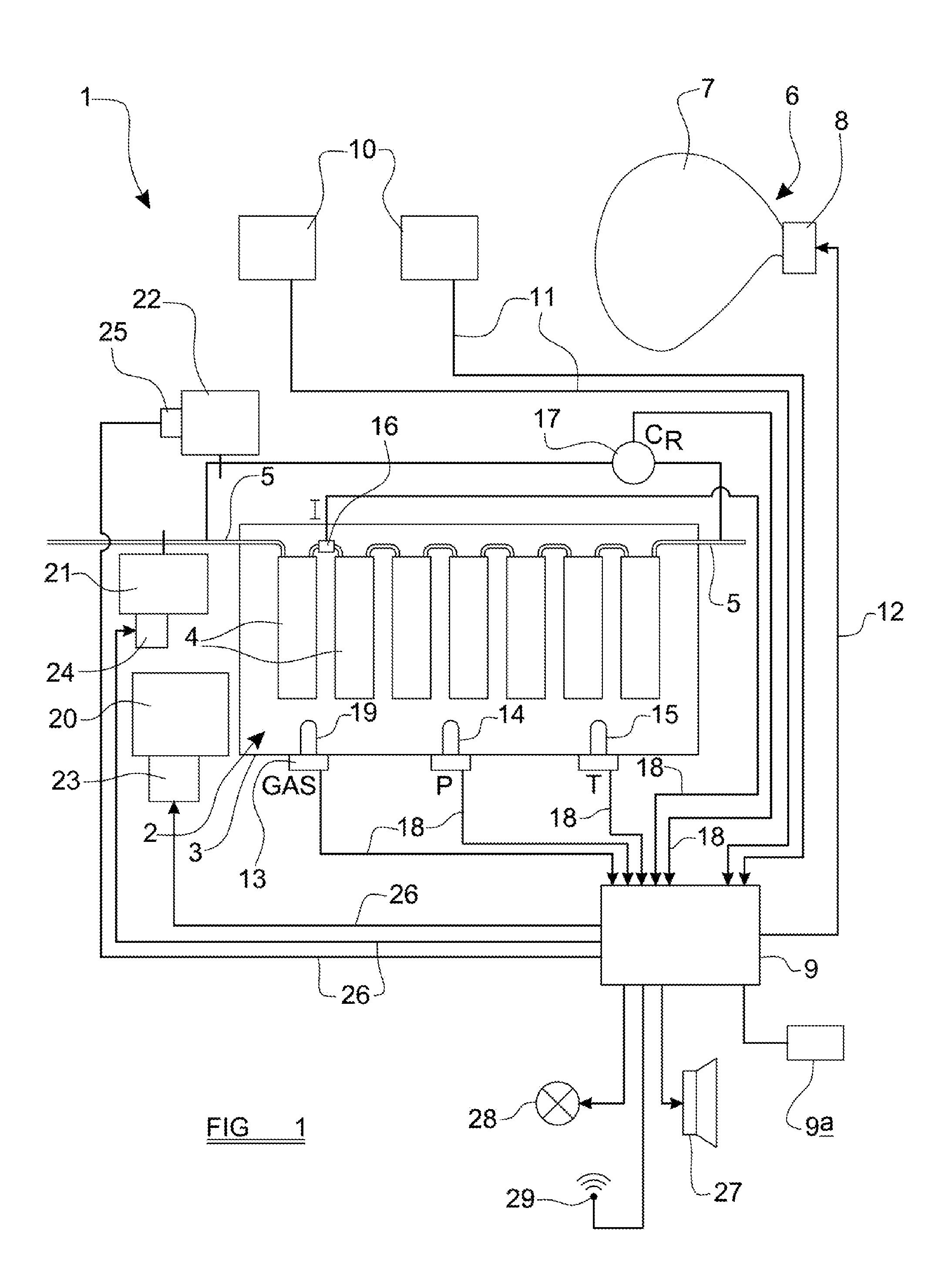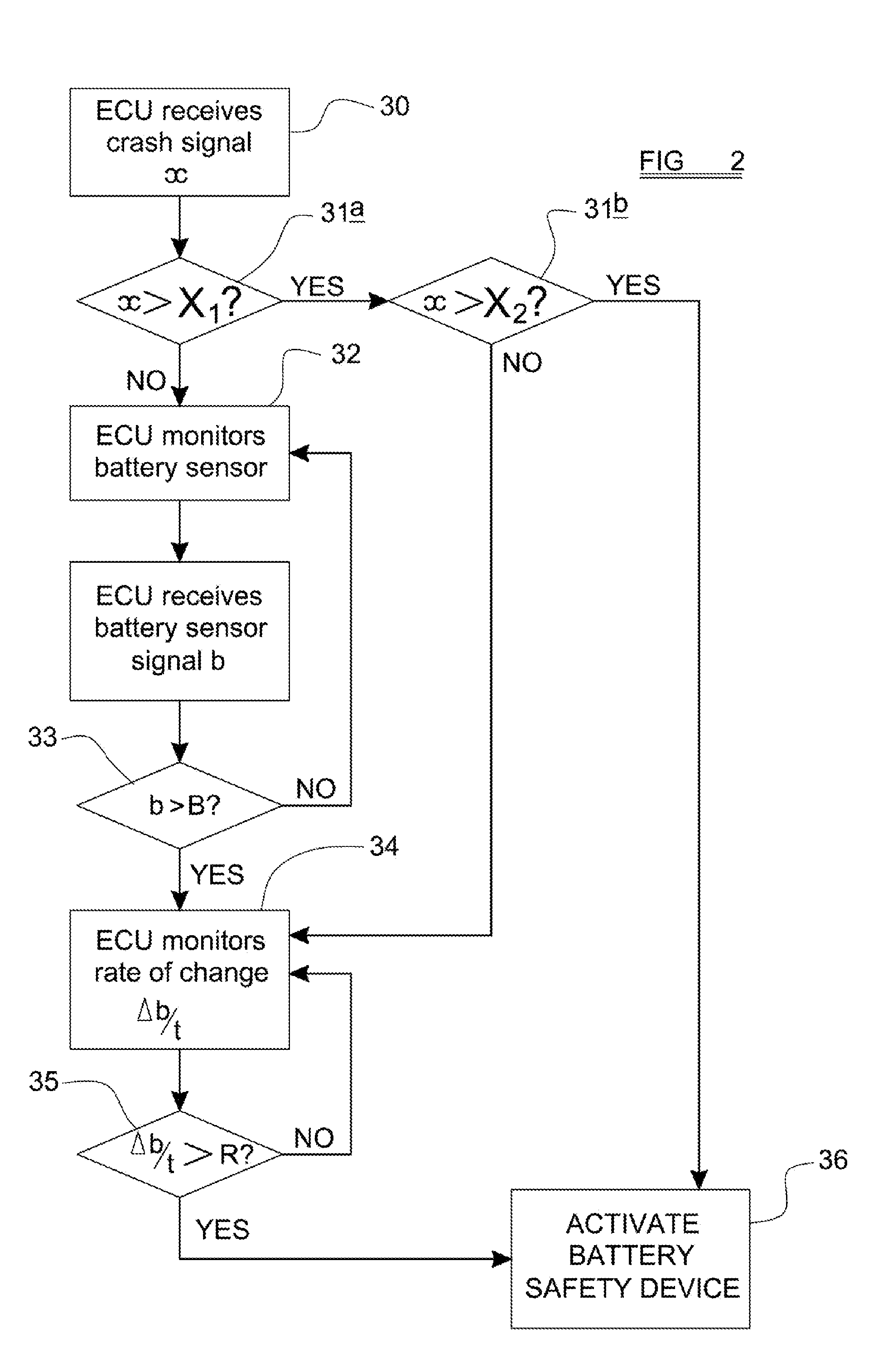Vehicle battery safety system
a safety system and battery technology, applied in the direction of electric devices, process and machine control, instruments, etc., can solve the problems of significant electrical hazards, contribute very significantly to the overall cost of the vehicle, and increase the risk of fire or explosion
- Summary
- Abstract
- Description
- Claims
- Application Information
AI Technical Summary
Benefits of technology
Problems solved by technology
Method used
Image
Examples
Embodiment Construction
[0028]Referring now in more detail to FIG. 1, there is illustrated a motor vehicle safety arrangement 1 in accordance with the present invention. In particular, a vehicle battery 2 is illustrated, which comprises a battery housing 3 within which there is provided a plurality of individual cells 4 which are electrically connected to one another in series. For example, in the case of an electrically powered or hybrid vehicle, it is envisaged that the battery 2 could take the form of a lithium ion battery comprising a series of cells connected so as to give the battery a total output voltage of approximately 300V and a total energy level of 2-10 kWh. The battery has a pair of terminals 5 which are electrically connected to the electrical system of the motor vehicle.
[0029]In a generally conventional manner, the motor vehicle is also provided with a number of occupant safety devices such as the device 6 illustrated schematically in FIG. 1 which is shown in the form of an inflatable airba...
PUM
 Login to View More
Login to View More Abstract
Description
Claims
Application Information
 Login to View More
Login to View More - R&D
- Intellectual Property
- Life Sciences
- Materials
- Tech Scout
- Unparalleled Data Quality
- Higher Quality Content
- 60% Fewer Hallucinations
Browse by: Latest US Patents, China's latest patents, Technical Efficacy Thesaurus, Application Domain, Technology Topic, Popular Technical Reports.
© 2025 PatSnap. All rights reserved.Legal|Privacy policy|Modern Slavery Act Transparency Statement|Sitemap|About US| Contact US: help@patsnap.com



